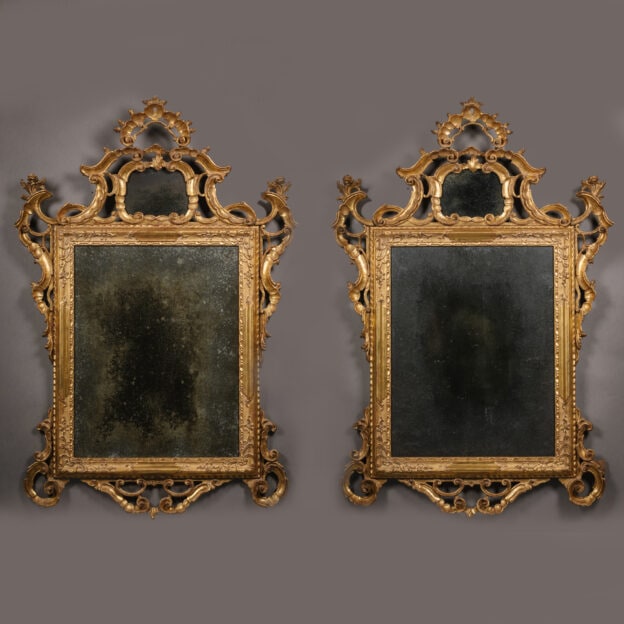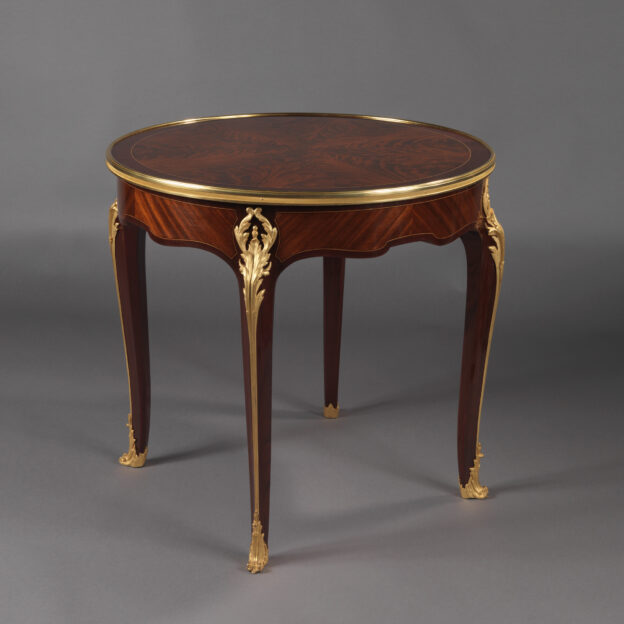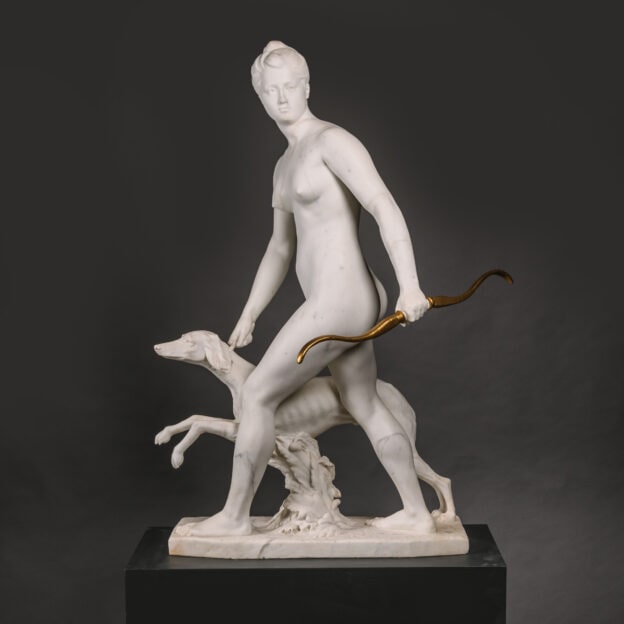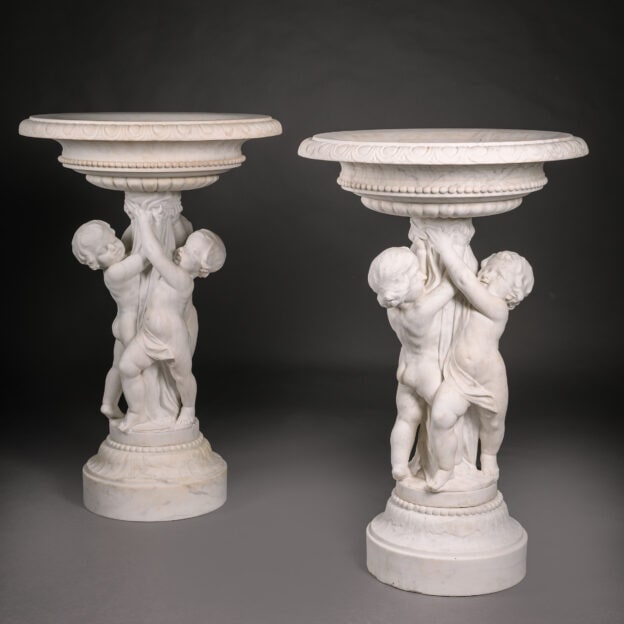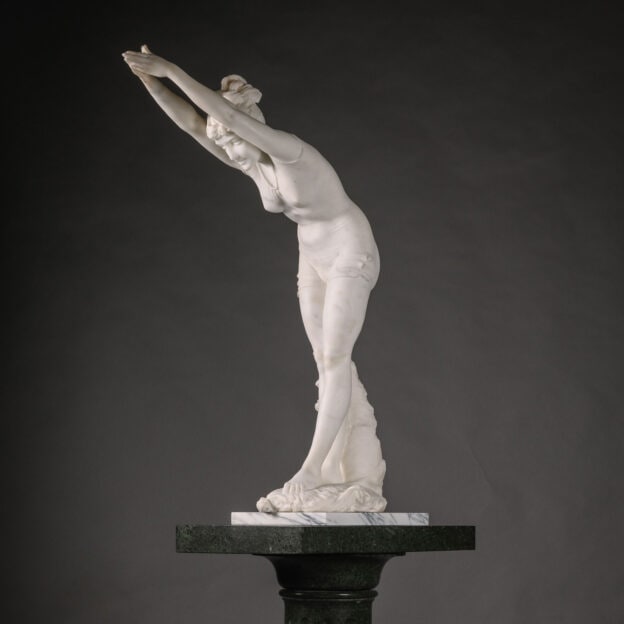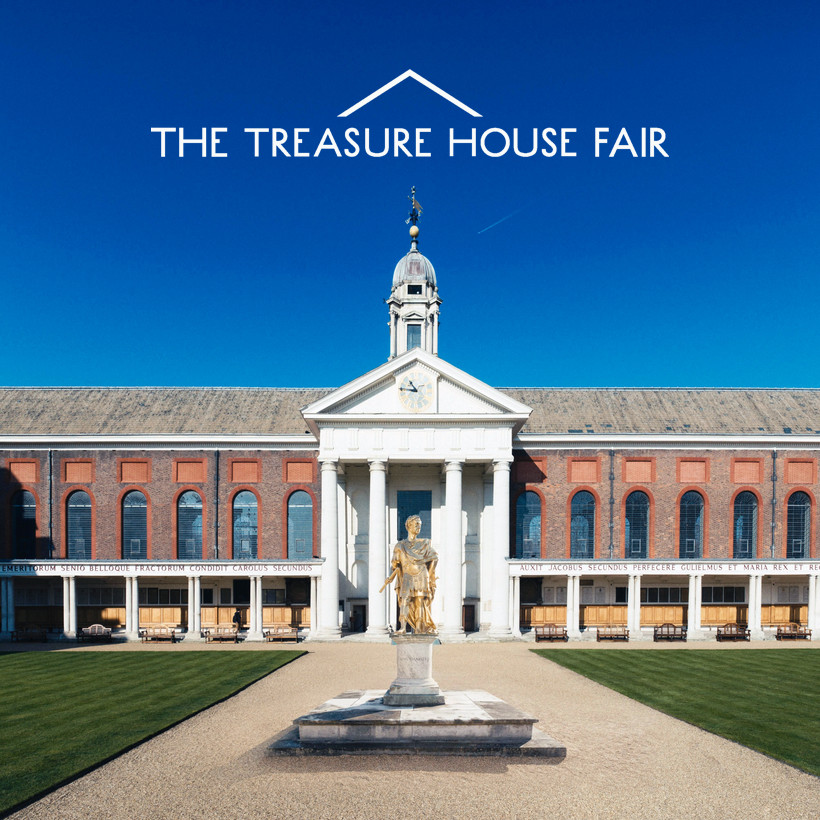INSPIRATION DE STYLE
Gilded Age Inspiration
Intérieurs de Style
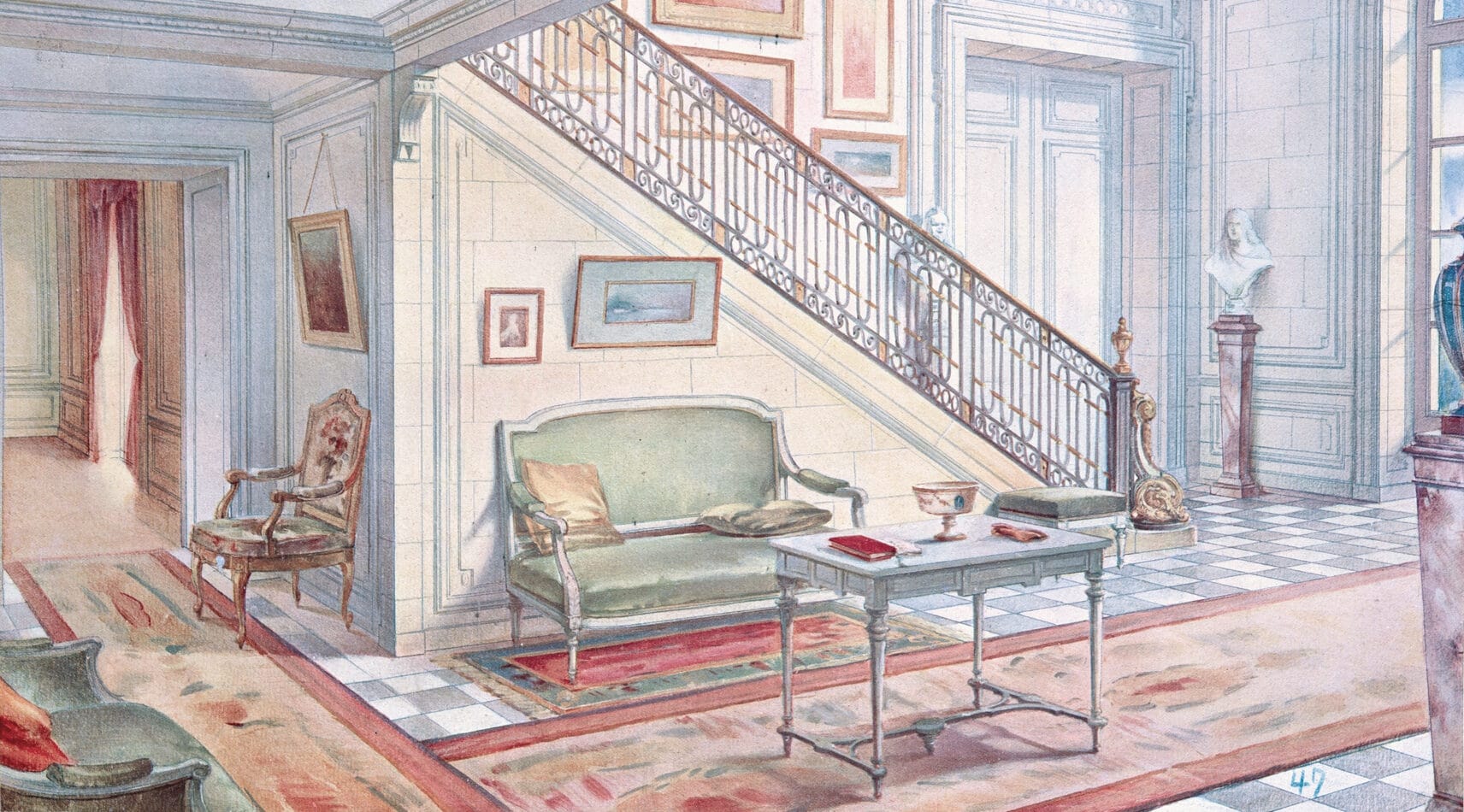
These fascinating watercolours of ‘Intérieurs de Style’ by Georges Rémon provided interior inspiration during the Belle Epoque and are just as inspiring today.
Georges Rémon (d. 1932) was a contemporary architect and interior decorator working in Paris at the turn of the twentieth century. The watercolours of the interiors he designed where collated and printed in a series of books titled ‘Intérieurs d’Appartements Modernes’ (1900) and ‘Intérieurs de Style’ (1907). They were the Architectural Digest or World of Interiors compendiums of their day, in that they had a global following, providing artful inspiration for decorators from London to New York, to create quintessentially classic French interiors.
Rémon’s designs for interiors provide a fascinating insight into how, at the turn of the twentieth century, interior decorators interpreted historical styles for interior design. His designs are just as useful in guiding today’s collector on how to place antiques and create rooms of great character.
The drawing above shows a light and airy entrance hall with checkerboard marble floor and gilt and polished steel staircase, very like the Petit Trianon staircase hall at Versailles. We like the soft colour palette of mellow greens and soft pinks.
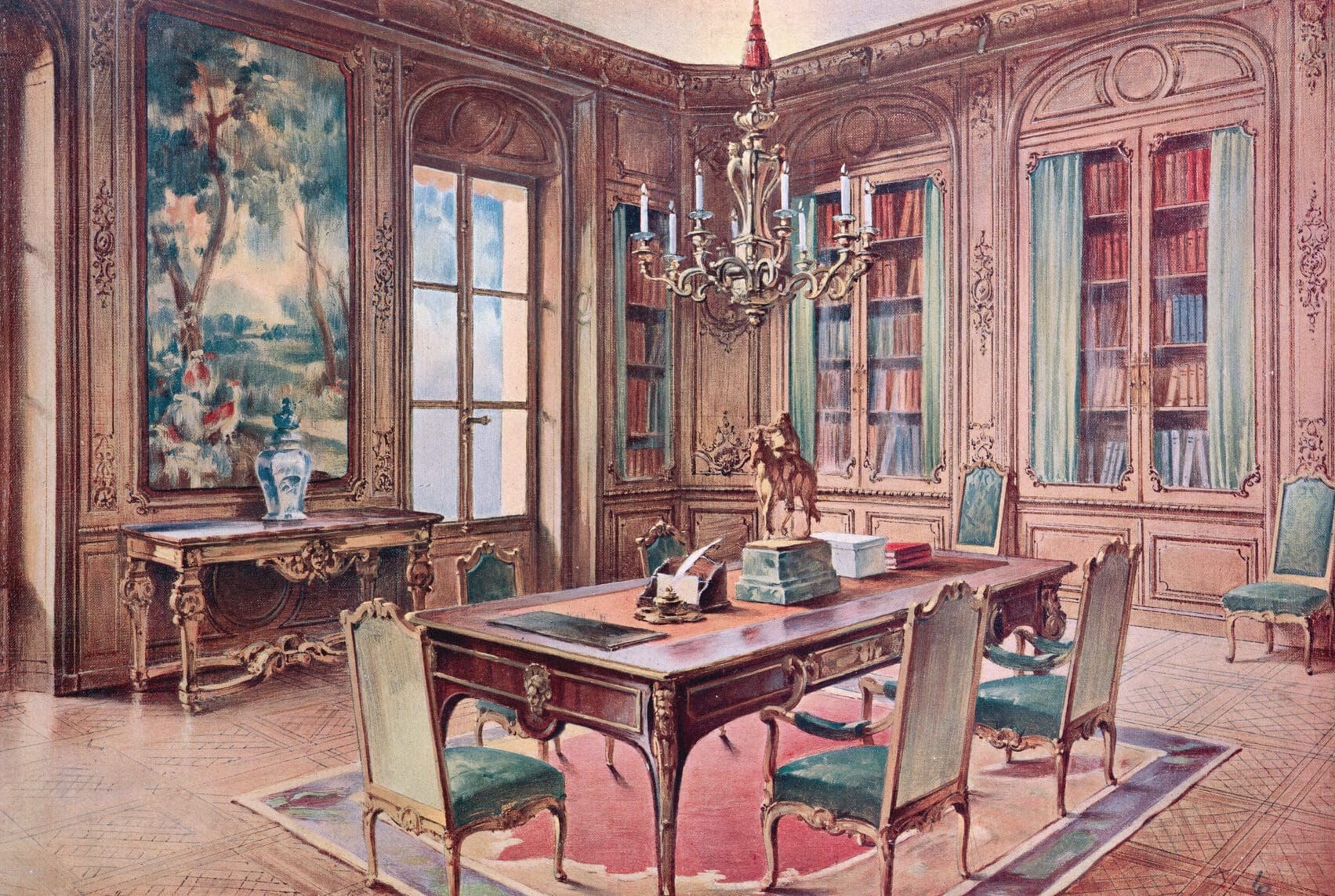
Fit for a king, or a captain of industry, this magnificent ‘bureau de Monsieur’ is designed in the Louis XIV Style. The centrepiece of the room is a palatial desk which is surmounted by a bronze statue of the Sun King on horseback. The walls are lined with bookcases and between the windows is a tapestry panel of a parkland vista. For furniture for such a room, the designer would have commissioned pieces from firms such as the preeminent Parisian ébéniste Paul Sormani.
Paul Sormani (1817-1877)
A Fine Louis XVI Style Gilt-Bronze Mounted Mahogany Bureau Plat.
Signed to the lockplate ‘P. SORMANI PARIS / 10 rue Charlot’.
Français, Circa 1870.
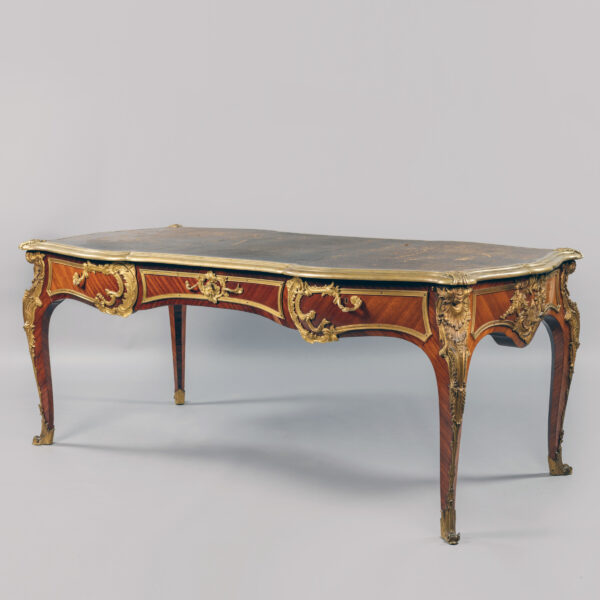
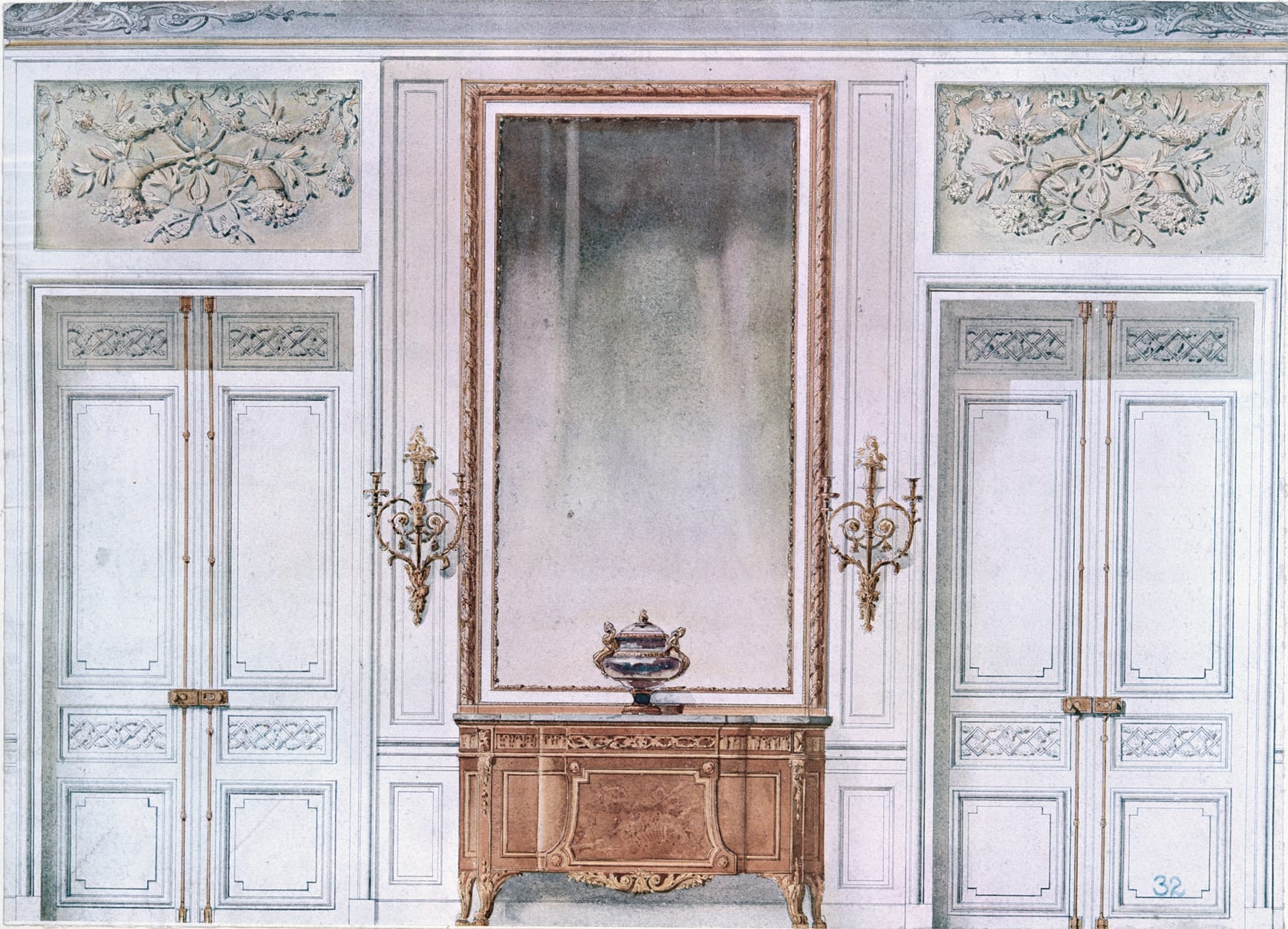
Louis XVI Style plan with chest placed against white painted boiserie panelling between double doors. The mirror with wall-lights either side, gives an indication of the palatial height of the ceilings. The chest is after the celebrated model by Jean-Henri Riesener made for Louis XVI. At the time of this watercolour, the wealthiest collector would have commissioned a version of this celebrated commode from the most famous furniture maker of the day, François Linke.
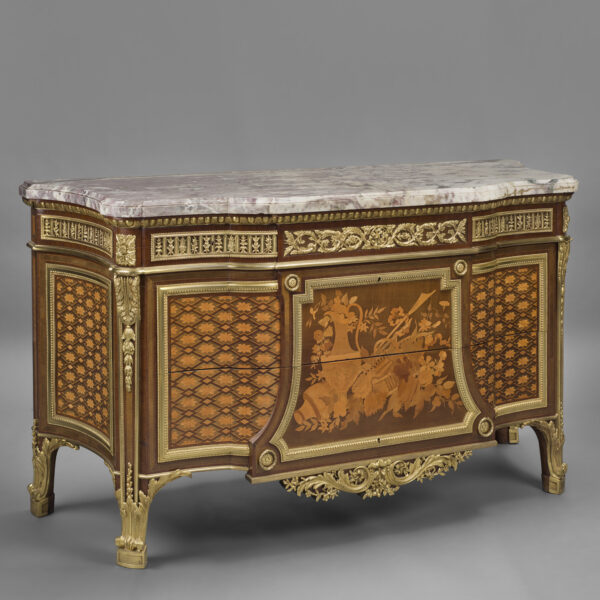
François Linke (1855 – 1946)
A Very Fine Louis XVI Style Commode, after a model by Jean Henri Riesener.
Signed ‘F. Linke’ and the lock-plate stamped ‘CT LINKE SERRURERIE/PARIS’.
France, Circa 1905.
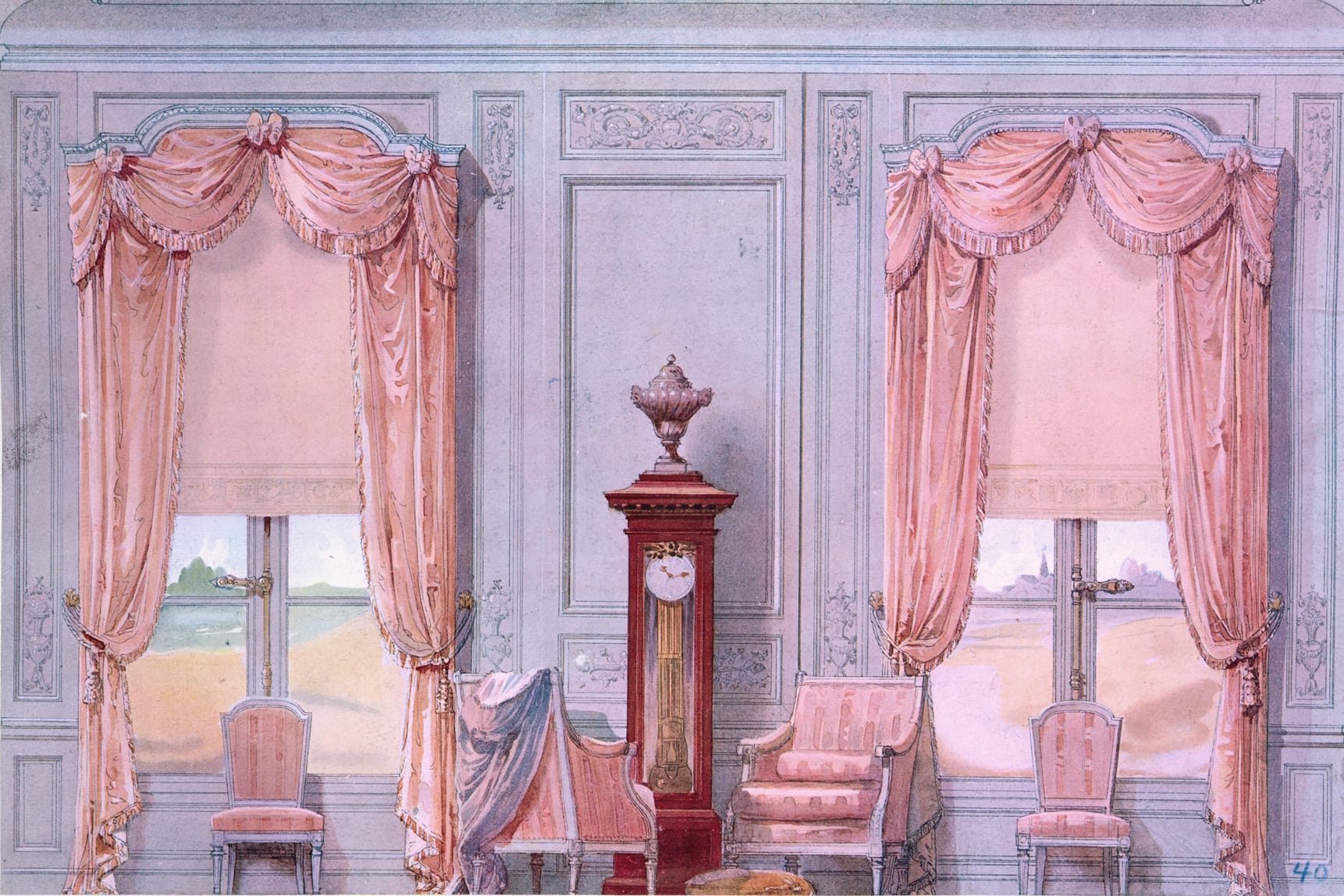
A most delicate palette for a drawing room or bedroom. The windows are draped with soft pink silk curtains and flank a handsome longcase regulateur clock with porphyry urn on top.
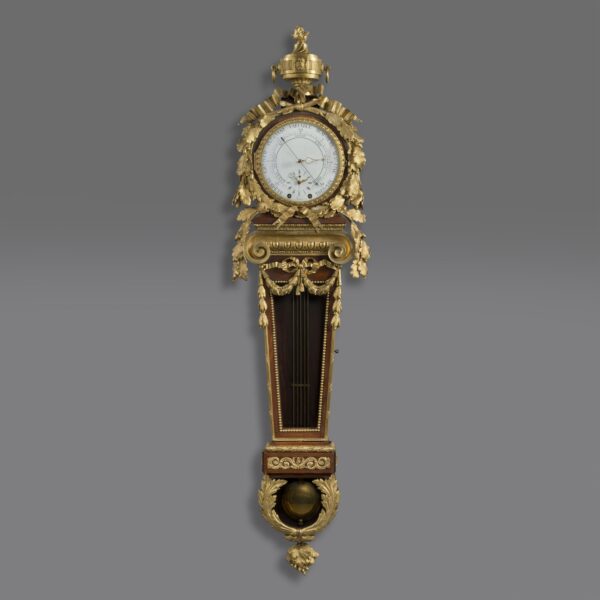
Après Martin Carlin
A Fine Louis XVI Style Gilt-Bronze Mounted Mahogany Cartel Clock and Barometer, After The Model By Martin Carlin.
The design based on the celebrated model by Martin Carlin, (maître 1766), formerly at Château d’Eu and now conserved at the Louvre
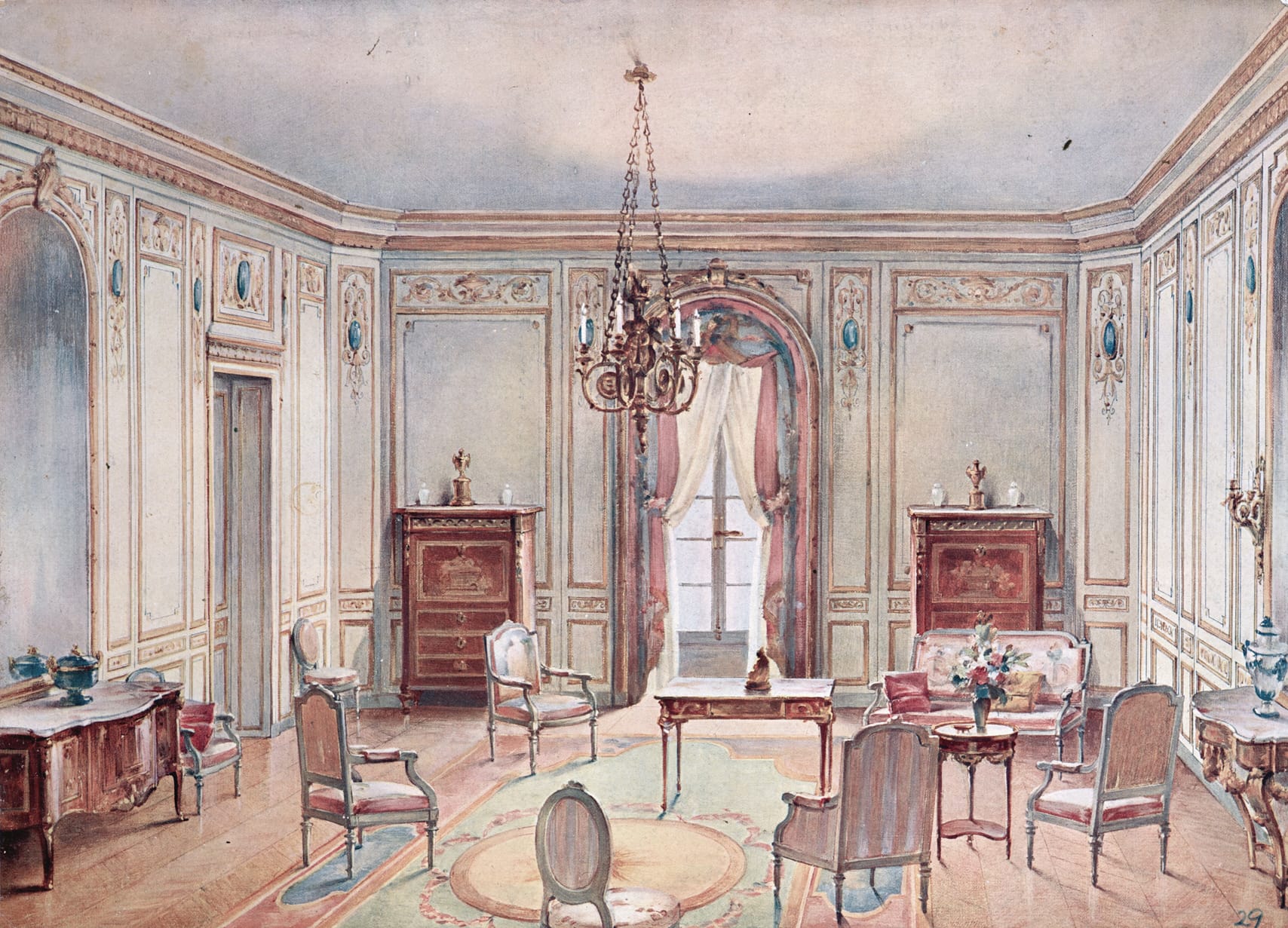
A light-filled Louis XVI Style Salon with white painted seat furniture and pair of secretaire cabinets. The chandelier is after a famous model by Pierre Gouthière for Le Cabinet Doré in Marie-Antoinette’s private apartments at the Palace of Versailles.
After Pierre Gouthière (1732 – 1813)
A Fine Louis XVI Style Gilt-Bronze Cherub Six-Light Chandelier,
France, vers 1870.
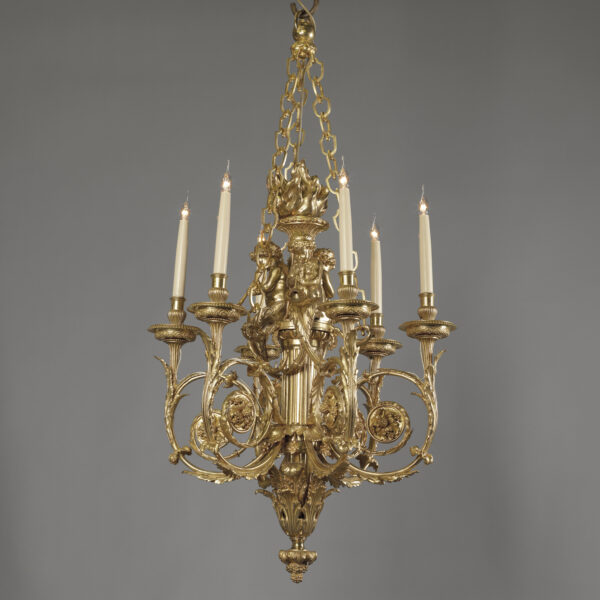
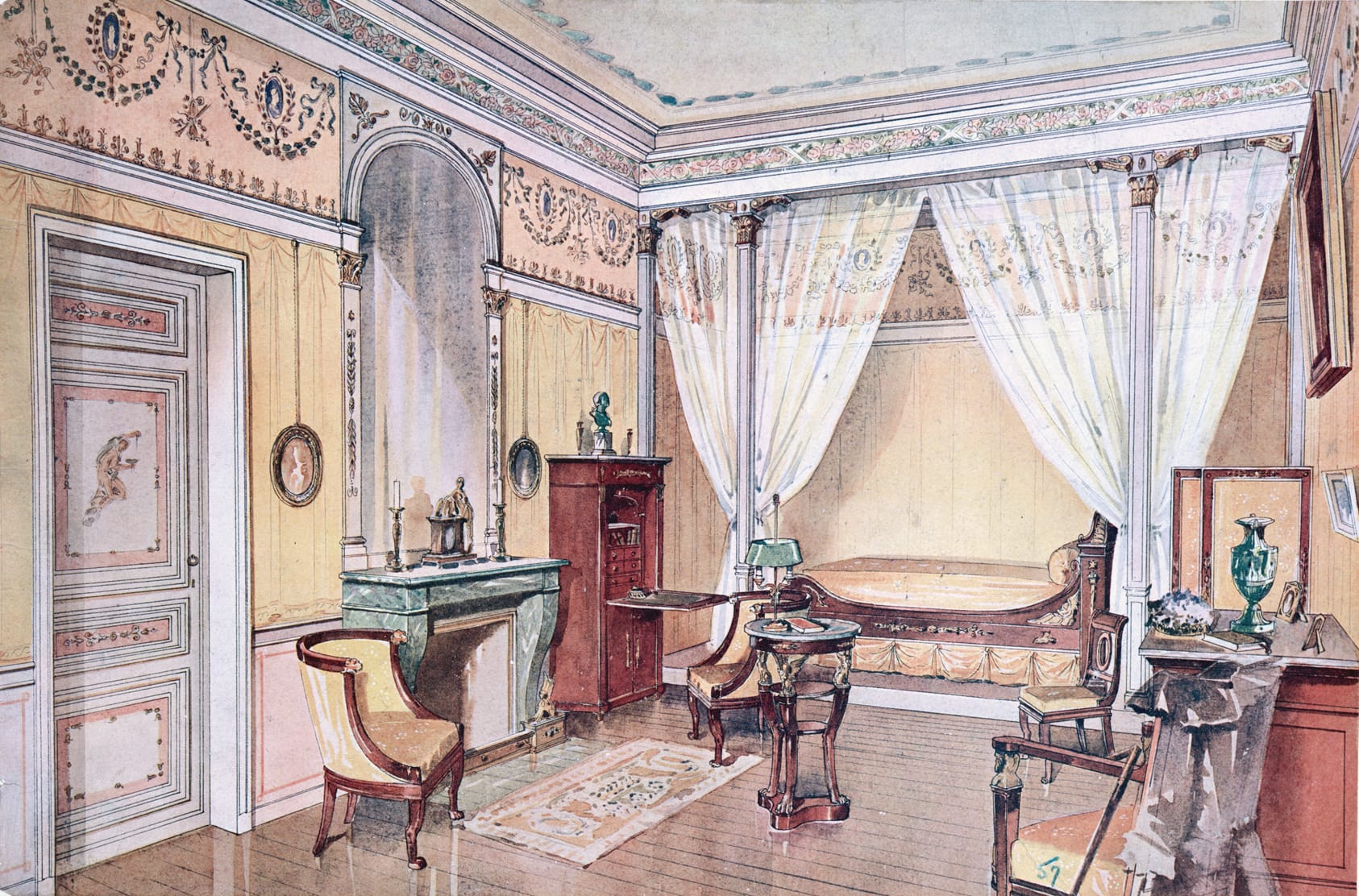
A design for an Empire style bedroom with lit en bateau box bed and fall-front writing cabinet.
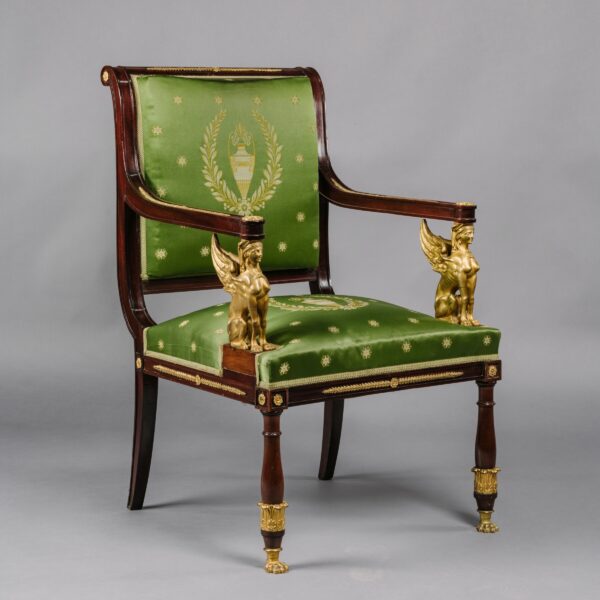
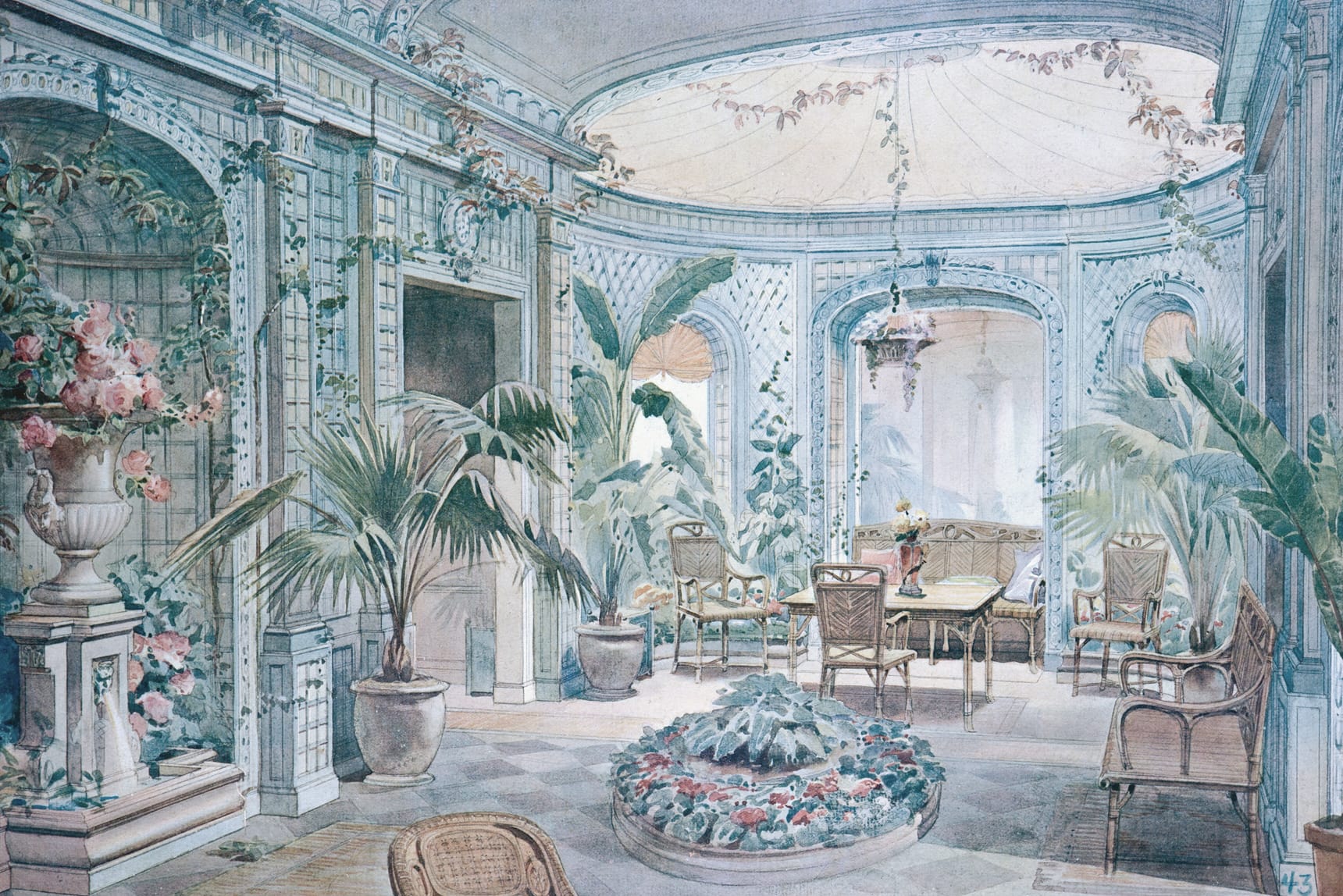
Every Gilded Age mansion and Edwardian manor house was incomplete without a conservatory. We love decorating conservatories, as they provide the perfect setting for marble statuary, like the urn and fountain shown here.
Marble Statuary
Georges Rémon (d. 1932)
At the École des Beaux-Arts, Georges Rémon was awarded first prize for a dining room design at the Union Central des Arts Décoratifs exhibition of 1891. Rémon, working with Eugène Morand, were together awarded first prize with a value of 5,000 francs, for a room design ‘d’un Cabinet d’amateur’, for the Institute Union Central des Arts Décoratifs at the Paris Exhibition of 1900. He later became an art critic and a celebrated Director of the School of the Applied Arts, Paris.
—
All watercolours reproduced from ‘Intérieurs de Style XVIIe & XVIIIe Siècles – Directoire – Empire’, Soixante Planches Reprduisant en Fac-Simile Les Aquarelles de L’Auteur Georges Rémon, Architecte Décorateur, Librairie Centrale des Beaux-Arts, Paris, 1907.
